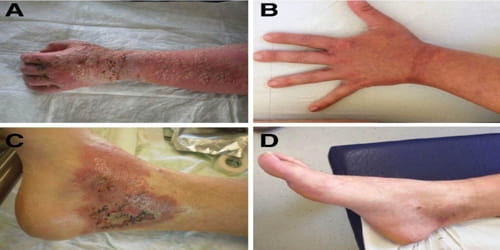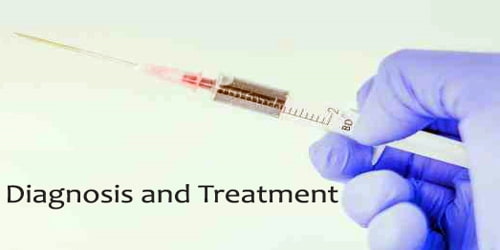Castleman’s Disease
Definition: Castleman’s disease (CD) is a rare disease of lymph nodes and related tissues. Castleman disease is not cancer, although some of the methods used to treat Castleman disease also are used to treat cancers. It was first described by Dr. Benjamin Castleman in the 1950s. Instead, it is called a lymphoproliferative disorder. This means there is an abnormal overgrowth of cells of the lymph system that is similar in many ways to lymphomas (cancers of lymph nodes).
Castleman disease includes at least 3 distinct disorders—unicentric Castleman disease (UCD), human herpesvirus 8 associated multicentric Castleman disease (HHV-8-associated MCD), and idiopathic multicentric Castleman disease (iMCD)—which are differentiated by the number and location of affected lymph nodes and the presence of human herpesvirus 8, a known causative agent.
Unicentric Castleman disease (UCD) only affects a single group of lymph nodes, often in your chest or belly. It’s the most common type.
The other type is called multicentric Castleman disease (MCD). It affects many lymph nodes in your body. Because it’s so widespread, doctors can’t remove the problem areas the way they can with UCD. A combination of drugs can keep the disease under control but can’t cure it.
In human herpesvirus 8 associated multicentric Castleman disease (HHV-8-associated MCD), enlarged lymph nodes are present in multiple lymph node regions and infection with human herpesvirus 8 is present. It is less common than unicentric Castleman disease and diagnosed most frequently in patients infected with human immunodeficiency virus (HIV).

Causes, Signs, and Symptoms: The main feature of Castleman’s Disease (CD) is an overgrowth of lymphocytes (immune cells) called B cells. The cause of this overgrowth is not known for sure, but it seems to be related to problems with the way a person’s immune system is working. Many people with CD have abnormally high blood levels of certain substances made by immune system cells.
One cause seems to be infection with human herpesvirus-8 (HHV-8), also known as Kaposi sarcoma herpesvirus (KSHV) (because it can cause Kaposi sarcoma). HHV-8 is often found in the lymph node cells in people who have MCD, especially those who are HIV positive. HHV-8 can cause infected cells to make a form of IL-6, which could explain how it leads to CD.
Signs and symptoms of Castleman disease occur most often with the multicentric form and can include
- fever,
- night sweats,
- trouble breathing,
- wheezing or coughing,
- trouble eating,
- loss of appetite,
- weak or numb hands or feet,
- nausea,
- rashes,
- vomiting, and
- fatigue.
Castleman disease is rare, and there are no reliable estimates of its frequency in the population.

Diagnosis and Treatment of Castleman’s Disease: The diagnosis of CD does involve looking at any symptoms the patient may have and blood test results. However, an actual diagnosis is made when doctors remove an affected lymph node and look at it with a microscope.
Treatment for Castleman disease can involve a combination of different approaches, including:
- Surgery to remove involved lymph nodes
- Medications to reduce the abnormal immune response
- Radiation therapy to destroy areas of affected lymph nodes that cannot be removed surgically
Several different classes of medications have been used to treat Castleman disease.
These chemotherapy drugs are most often used in Castleman disease:
- carmustine (BiCNU),
- cladribine (Leustatin),
- chlorambucil (Leukeran),
- cyclophosphamide (Cytoxan),
- doxorubicin (Adriamycin, Rubex),
- etoposide (Vepesid),
- melphalan (Alkeran),
- vinblastine, and
- vincristine (Oncovin).
Surgical removal of the involved lymph nodes is a helpful way to treat unicentric (localized) Castleman disease. Surgery also may be used in multicentric Castleman disease as a way to control symptoms, although, in multicentric Castleman disease, it is not typically possible to remove all of the affected lymph nodes.
Information Source:
















